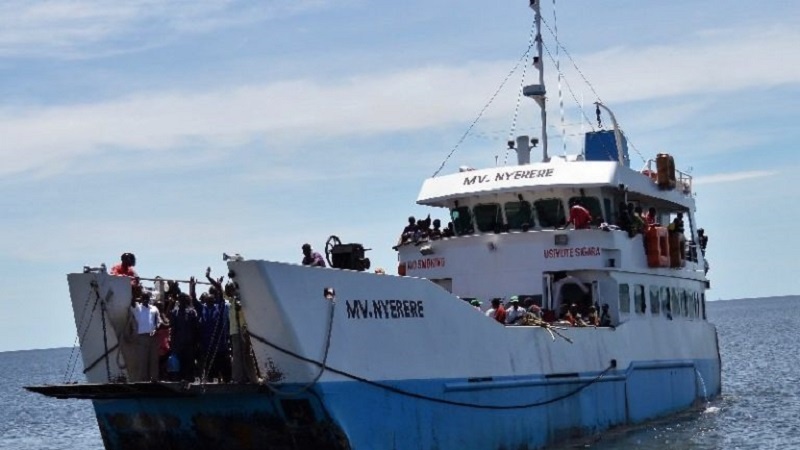By TZ Business News Staff.
The ferry boat accident in which over 136 people have been confirmed dead from drowning in Lake Victoria in Northern Tanzania on Thursday, September 20, 2018, was an accident of personal choice (Kiswahili: ajali ya kujitakia), the opposition political party politician James Mbatia has told a press conference.
President John Pombe Magufuli has responded with a warning politicians should understand it was not proper to use this accident as a platform for political popularity.
The President announced on Friday, September 21, 2018 the country would mourn the loss of lives in Ukerewe district—an administrative island area inside Lake Victoria– for four days during which the national flag would fly at half-mast. The President also issued condolences to relatives and friends of those who died.
The boat operated passenger trips between two tiny islands of Ukara and Bugorora in the Ukerewe District of Lake Victoria on the Tanzania side in Mwanza region.
Mbatia, the member of parliament for Vunjo constituency in Kilimanjaro on the NCCR-Mageuzi party ticket, identified himself at a press conference as an expert on disasters with training from Holland. He said those connected to the MV Nyerere boat accident should be considered to have committed deliberate murder, adding that it was known the accident would happen.
This is not the first time an accident happens in the Lake Victoria, Mbatia argued. Many people lost their lives in this lake in 1996 when MV Bukoba capsized killing around 1000 paople on board. That experience should have taught this country a lesson for preparedness.
Chairman of Chama Cha Demokrasia na Maendeleo (CHADEMA) Freeman Aikaeli Mbowe complained time to save survivors overnight was wasted for lack of lighting, wondering why it was not possible to even use a generator to manage the darkness at the site of the accident.
The BBC quoted the Ukerewe District Commission Col. Lucas Maghembe on Thursday evening when the search and rescue operations were being postponed that those working on the rescue mission had already inspected the inside of the boat and no signs of survivors were found.
 But the BBC later reported that the MV Nyerere technician Alphonse Charahani was found alive 48 hour after the accident. He was taken to the Bwisya Health Centre in Ukara for treatment.
But the BBC later reported that the MV Nyerere technician Alphonse Charahani was found alive 48 hour after the accident. He was taken to the Bwisya Health Centre in Ukara for treatment.
At the time of writing this post 163 dead bodies had been recovered, out of which 116 had been identified by their relatives. It is feared the boat had over 400 people on board when it capsized just a few meters away from its port of call at the small island of Ukara.
Earlier reports said the ferry boat which plies between the tiny islands Ukara and Bugorora was overloaded and capsized 100 meters from its anchorage area at Ukara island. The State television station TBC 1 reported the accident happened at 2.00PM local time.
K-VIS Blog reported the boat capsized when passengers rushing to get out of the ship first all moved to one side of the boat, which tilted the balance of the boat toward that side and resulting in the capsizing.
Social media has quoted President John Pombe Magufuli as saying the boat captain was not in the boat. He had delegated the job to a person not experienced in running the boat. The unnamed captain who abconded duty is being held by the police, according to social media.
This is not the first heartbreaking accident in Tanzanian waters in recent history. An overloaded canoe capsized in Dar es Salaam in 1989 killing all those who could not swim including an architectural engineer with a Masters Degree paid for by the Government in the United Kingdom. A journalist originally from Ukerewe District knew how to swim. He jumped off the canoe and lived to tell the story.
The MV Bukoba accident in Lake Victoria in 1996 is probably the most gruesome accident in Tanzania’s history. Most accidents are attributed to lack of repairs on vessels, lack of rigorous inspections, lack of life jackets and especially the problem of overloading.





